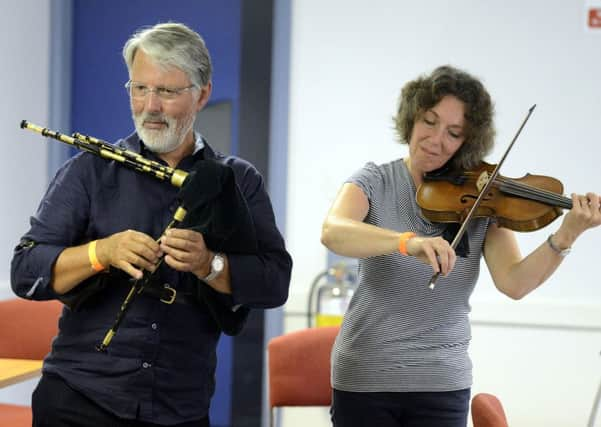Glendale, History Society


Glendale Local History Society welcomed Andrew and Margaret Watchorn, who demonstrated their knowledge and skills of traditional Northumbrian music – their focus, the Northumbrian smallpipes.
March 10 happened to be National Bagpipe Day.
Bagpipes are a truly historic instrument, played by many all over the world.
Advertisement
Hide AdAdvertisement
Hide AdThe Watchorns have also specialised in Swedish music and demonstrated a Swedish bagpipe and Swedish keyed fiddle – both have ancient origins.
Our speakers’ ability as teachers, and Margaret’s university education in music, became apparent as they explained the origins, construction and mechanisms of pipes.
The instrument comprises a bag, usually made of leather, and pipes, sometimes made from plum or boxwood, but now more commonly constructed from African blackwood or ebony, its hard texture producing high quality sound.
Bagpipes have existed since the Mediaeval era. The earliest 12th century representation can be found on a gravestone at St Michael’s Church, Ford, with another in Hexham Abbey. Morpeth Bagpipe Museum holds examples from the 18th century.
Advertisement
Hide AdAdvertisement
Hide AdAlthough air was originally blown into the bag by mouth, this fell out of fashion when, in the 18th century, the French developed a ‘souffle’, an arm pumping mechanism, thus reducing distortion of the player’s facial features.
We learned that the instrument includes drone pipes, which ‘hum like bees’, giving harmony, whereas the chanter ‘sings like a bird’, producing the tune. As elaborate chanters evolved, giving two octaves and a wider choice of keys, there became a need for extra drones too.
Details of variants in sound production were illustrated, with an explanation of pitch. We learned how notes have subtly changed over the centuries. As with many instruments, performance can be influenced by sensitivity to temperature and humidity.
With Andrew playing smallpipes, and Margaret a fiddle, they played a variety of traditional tunes – Juniper Hill was recorded in Yorkshire in the 1700s, while The One Horned Sheep referred to an illicit whisky still.
Advertisement
Hide AdAdvertisement
Hide AdOnly since the 1970s have written traditional Northumbrian manuscripts appeared. Prior to that tunes were learnt by oral tradition. Margaret was inspired by famed local mentor Jo Hutton, with whom she spent many days simply listening, interpreting, understanding, playing and practising.
Thanks to this excellent playing and explanation, the audience’s appreciation of our county’s long musical tradition will have been greatly enhanced.
Glendale Local History Society’s next talk is on Wednesday, April 13, at 7.30pm, in the Cheviot Centre, Padgepool Place, Wooler. Michael Wade will speak on the traditional craft of Hedge Laying and demonstrate the tools of his trade. He is a skilled craftsman and a judge at hedge laying competitions.
Tea, coffee and biscuits, served at 7pm, are included in the £2 charge.